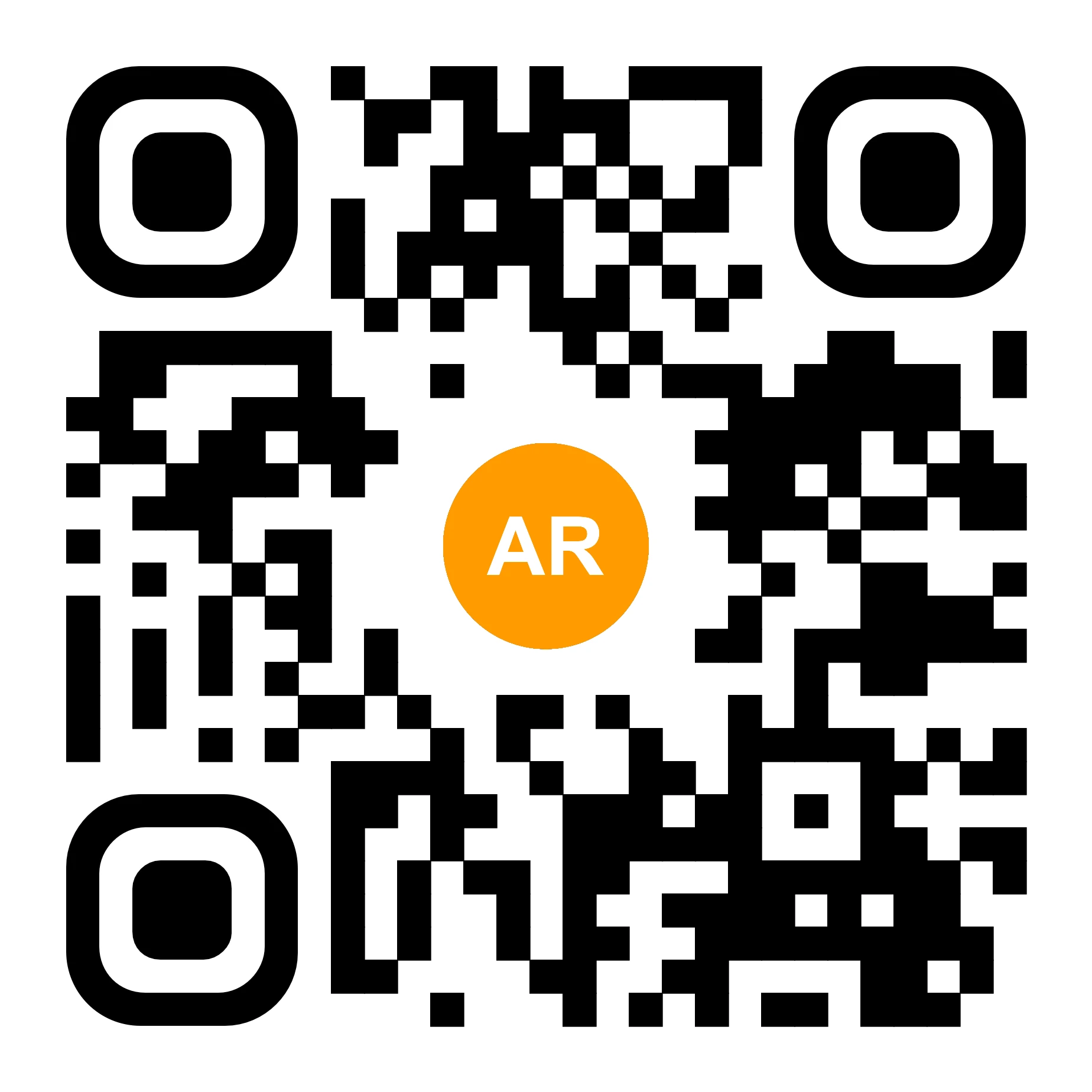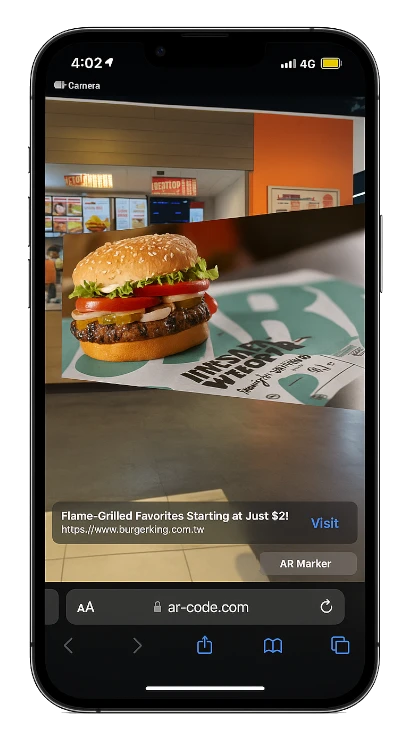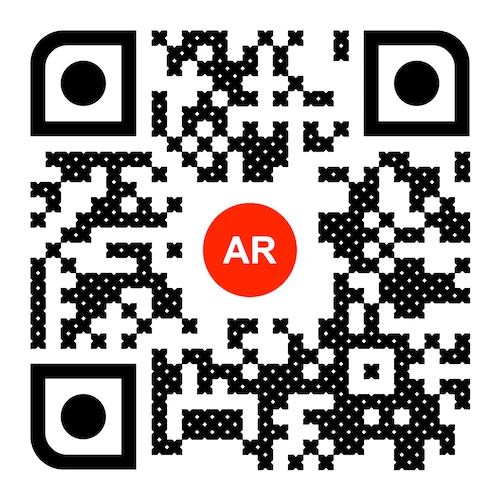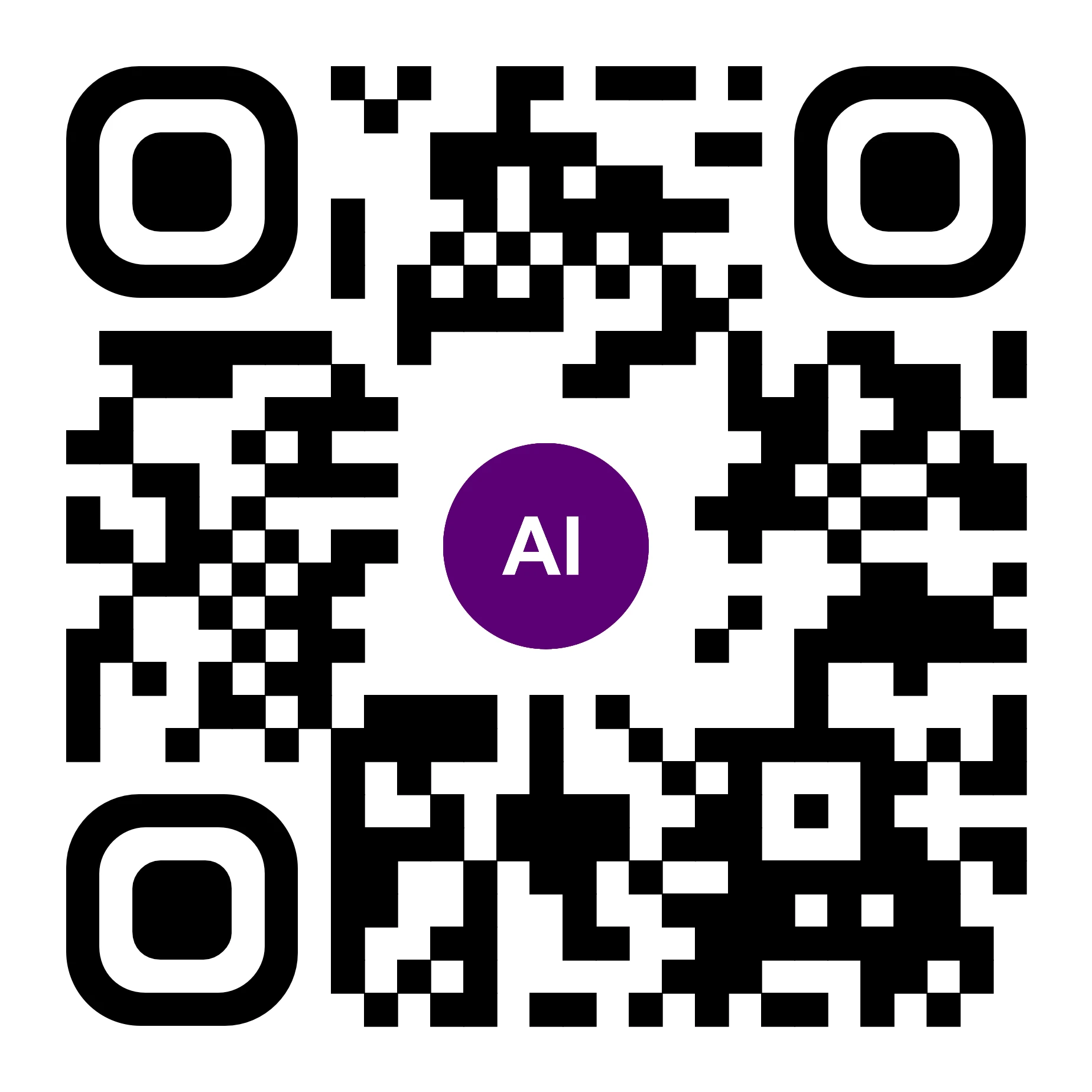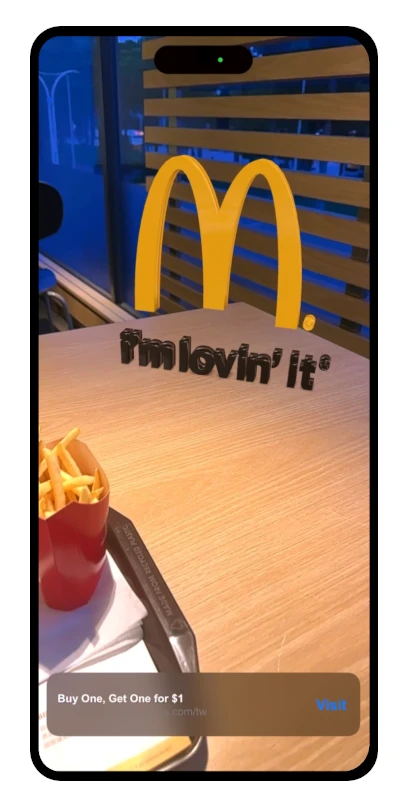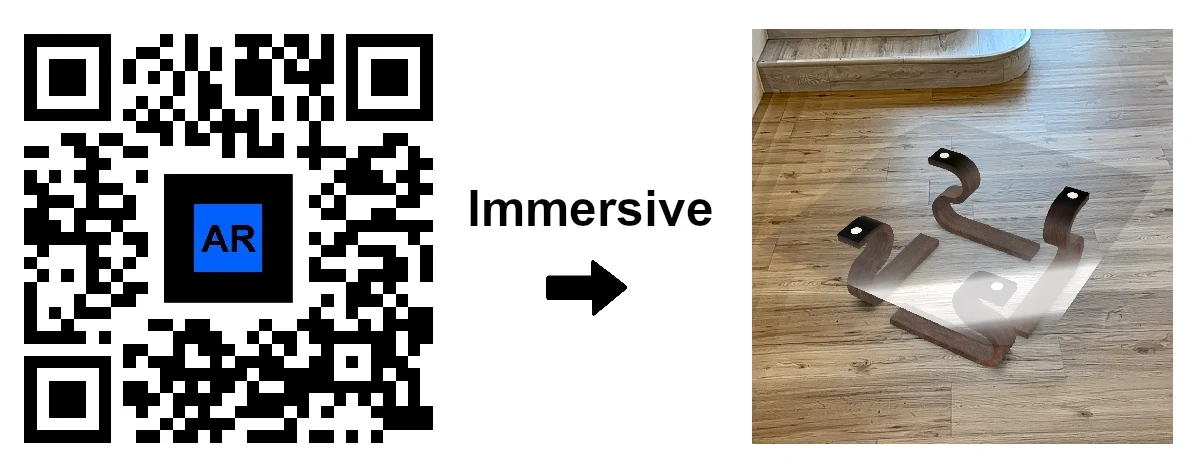
AR Splat: โซลูชันใหม่สำหรับการสแกน 3 มิติสู่ออกเมนเต็ดเรียลลิตี้โดยใช้ Gaussian Splatting
เทคโนโลยีAR Code | 22/12/2025
AR Splat by AR Code เป็นโซลูชั่นล้ำสมัยสำหรับธุรกิจที่ต้องการสร้างฉาก 3D คุณภาพสูงอย่างรวดเร็ว อัปโหลดวิดีโอที่ถ่ายวนรอบใด ๆ — AR Splat จะเปลี่ยนวิดีโอนั้นให้กลายเป็นสภาพแวดล้อม 3D ที่สมจริง เข้าถึงได้ทันทีผ่าน AR QR Code ขับเคลื่อนด้วยเทคโนโลยี Gaussian Splatting อันล้ำหน้า AR Splat มอบวัสดุเสมือนจริงและความลึกที่แม่นยำโดยตรงจากเบราว์เซอร์ โดยไม่ต้องใช้แอป การเขียนโค้ด หรือฮาร์ดแวร์พิเศษ บริษัทสามารถนำเสนอประสบการณ์ความจริงเสริมที่น่าดึงดูดสำหรับลูกค้าและทีมงานได้อย่างง่ายดายโดยใช้ความพยายามน้อยที่สุด
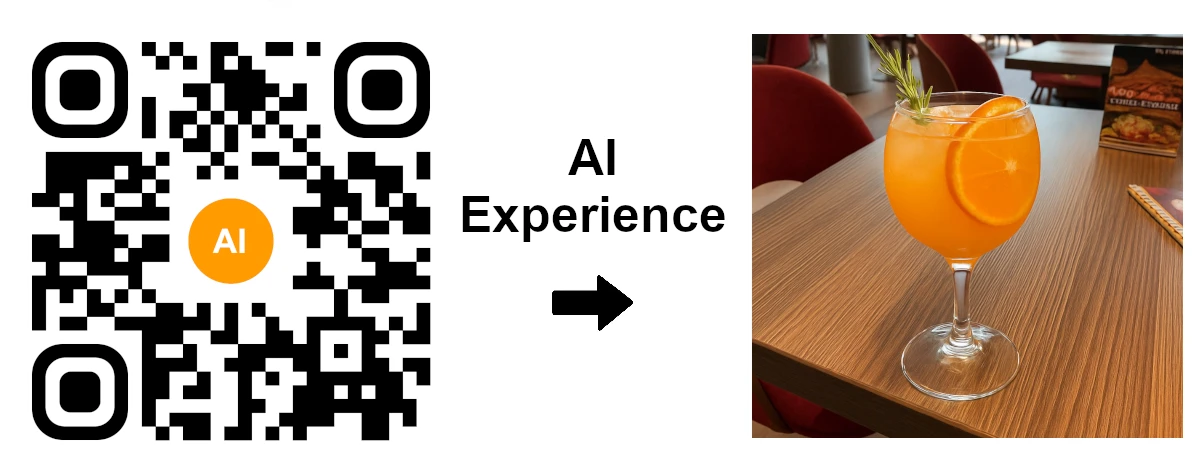
การสร้างภาพด้วย AI Code พลิกโฉมการแสดงภาพสินค้าใหม่ผ่านการสแกน QR Code
เทคโนโลยีAR Code | 19/12/2025
AR Code กำลังปฏิวัติวงการ Augmented Reality (AR) และ Artificial Intelligence (AI) โดยนำเสนอภาพจำลองที่สร้างขึ้นด้วย AI ล้ำสมัย ดึงดูดลูกค้าทันทีด้วยการสแกน QR code ปลดล็อกคุณค่าทางธุรกิจของ AI Code สำหรับองค์กรของคุณ และยกระดับการมีส่วนร่วมของลูกค้าผ่านประสบการณ์ภาพเสมือนจริงสุดสมจริง
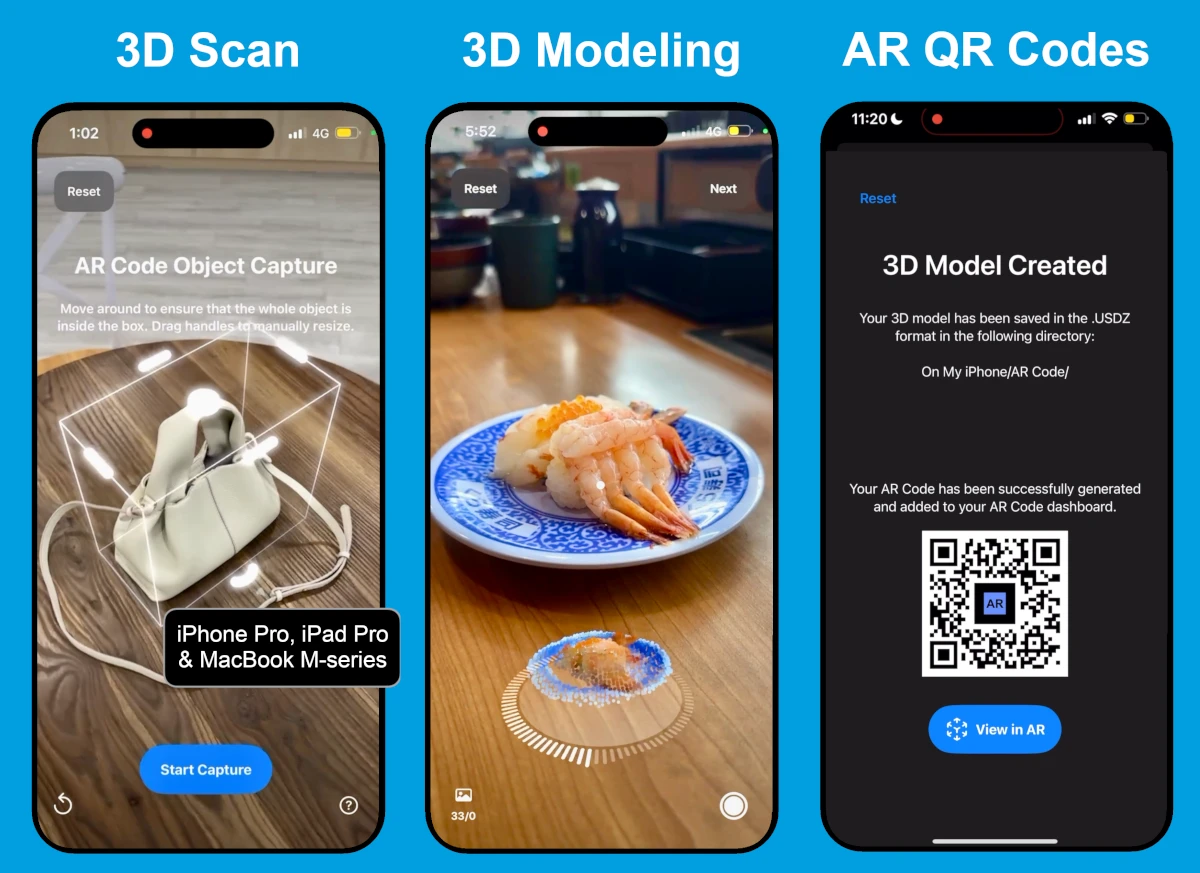
AR Code Object Capture ใช้งานได้แล้วบน iPhone และ iPad ทุกรุ่น ไม่ต้องใช้ LiDAR
เทคโนโลยีAR Code | 22/12/2025
ปลดล็อกโซลูชันความเป็นจริงเสริมอันทรงพลังสำหรับธุรกิจของคุณด้วย แอป AR Code Object Capture รองรับทุก iPhone และ iPad — แม้ไม่มี LiDAR — ทีมของคุณสามารถสแกน สร้าง และเผยแพร่โมเดล 3D และ AR QR Code ที่น่าประทับใจได้ทันที เพียงแค่ใช้อุปกรณ์ Apple ที่มีกล้อง เร่งการเปลี่ยนผ่านสู่โลกดิจิทัลและส่งมอบเนื้อหา AR สุดประทับใจให้ลูกค้าของคุณอย่างง่ายดาย
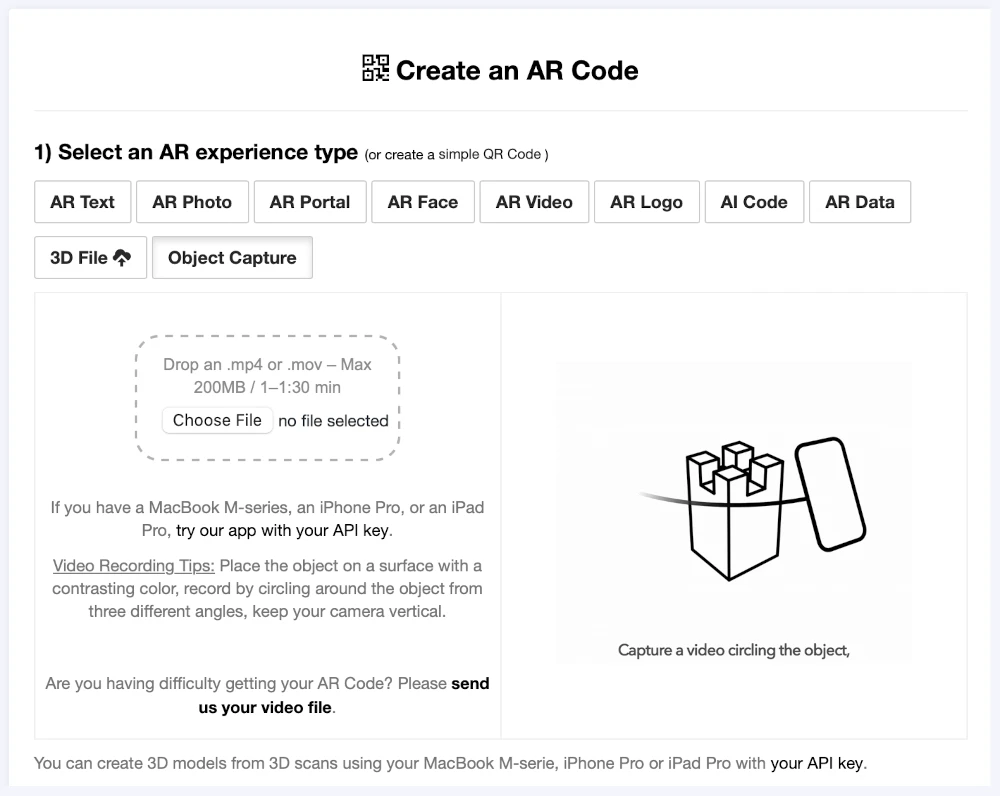
สามารถสแกน 3 มิติจากวิดีโอได้แล้วบน AR Code Web Interface
เทคโนโลยีAR Code | 01/01/2026
เปลี่ยนแปลงธุรกิจของคุณด้วยโซลูชัน AR Code Object Capture สุดล้ำ ที่พร้อมให้บริการบนแพลตฟอร์มเว็บของเรา ยกระดับอิทธิพลของแบรนด์ของคุณด้วยการเปลี่ยนวิดีโอ 3D สแกน ให้กลายเป็นคอนเทนต์เสมือนจริง (Augmented Reality) สุดประทับใจได้ในไม่กี่นาที โดยไม่ต้องวุ่นวายกับเทคนิคใดๆ

คู่มือการสแกน 3 มิติด้วยโซลูชัน "AR Code Object Capture" ของเรา
เทคโนโลยีAR Code | 23/12/2025
เร่งการเปลี่ยนผ่านสู่ดิจิทัลของธุรกิจคุณด้วย AR Code Object Capture แพลตฟอร์ม SaaS ขั้นสูงสำหรับการสแกน 3D และโซลูชันความเป็นจริงเสริมที่องค์กรชั้นนำทั่วโลกไว้วางใจ ด้วยอินเทอร์เฟซที่ทรงพลังและใช้งานง่าย คุณสามารถสร้างโมเดล 3D คุณภาพสูงได้อย่างรวดเร็ว พลิกโฉมการตลาด ค้าปลีกออนไลน์ การผลิต และการสาธิตผลิตภัณฑ์ ผสานเทคโนโลยีของ AR Code เพื่อส่งมอบประสบการณ์ AR แบบอินเตอร์แอคทีฟที่ดึงดูดลูกค้าและทำให้แบรนด์ของคุณโดดเด่นเหนือคู่แข่ง
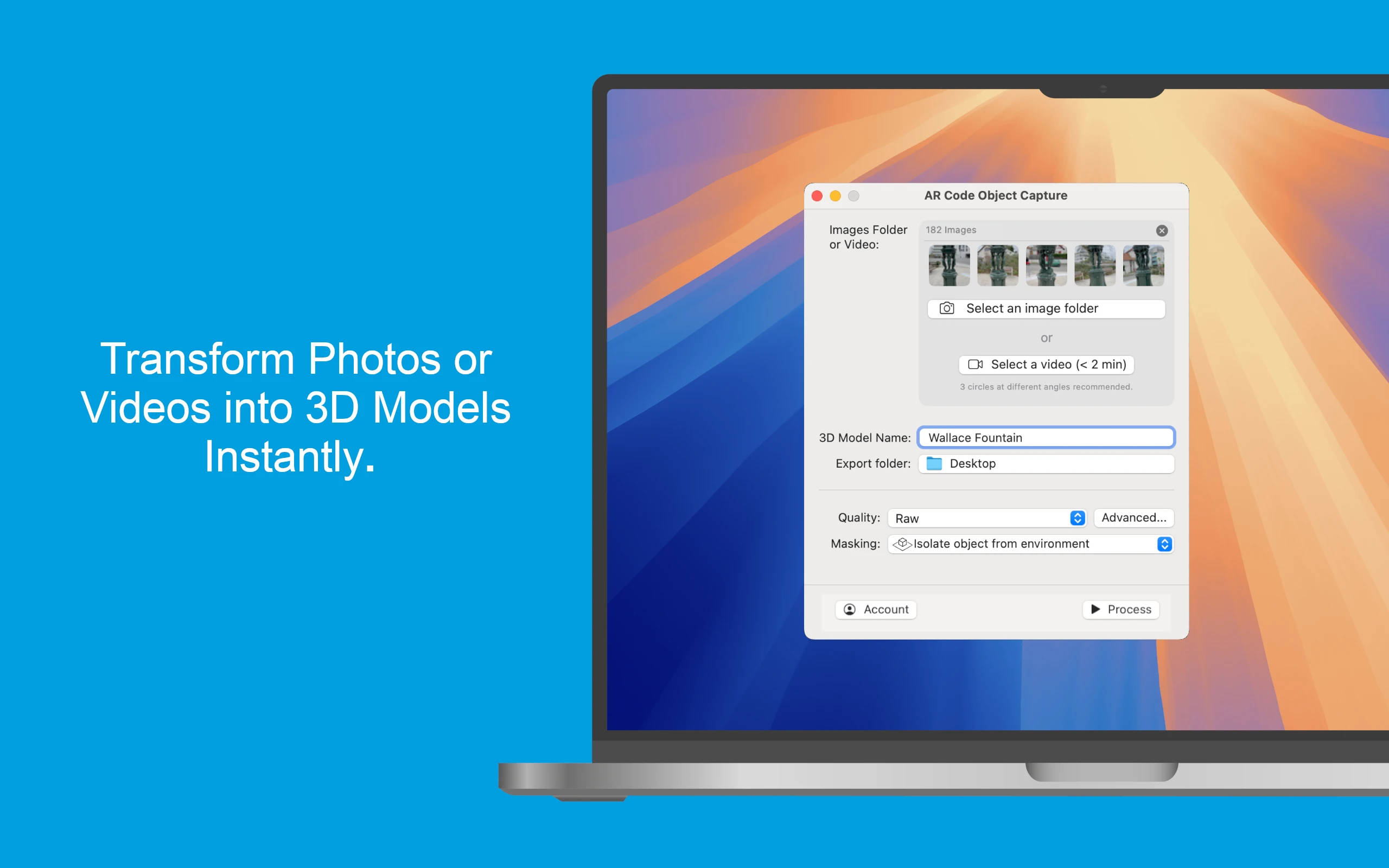
จากวิดีโอสู่การสร้างโมเดล 3 มิติ: โฟโตแกรมเมทรีด้วย AR Code Object Capture บน MacBook M-Series
เทคโนโลยีAR Code | 26/12/2025
เสริมพลังธุรกิจของคุณด้วย แอป AR Code Object Capture ที่ล้ำสมัย ผู้นำด้านการสแกน 3 มิติและซอฟต์แวร์ AR SaaS สำหรับโซลูชั่นระดับองค์กร รองรับการใช้งานอย่างเต็มรูปแบบบนอุปกรณ์ MacBook M-series ที่ใช้ macOS 15.0 ขึ้นไป แอปนี้สามารถเปลี่ยนสินค้าจริงให้เป็นโมเดล 3 มิติแบบอินเทอร์แอคทีฟและ AR QR Code ภายในไม่กี่นาที พร้อมความเข้ากันได้ข้ามอุปกรณ์ทันทีสำหรับ iPhone และ iPad AR Code Object Capture ขับเคลื่อนกระบวนการ AR ที่มีประสิทธิภาพ พิสูจน์แล้วว่าสร้างประสบการณ์ที่เหนือกว่า web interface อย่างชัดเจน

ปรับแต่งโค้ด AR ของคุณด้วยตัวเลือกการออกแบบสุดล้ำ
เทคโนโลยีAR Code | 21/12/2025
AR Codes กำลังเปลี่ยนโฉมวิธีที่ธุรกิจมีปฏิสัมพันธ์กับผู้บริโภค ด้วยการผสานผลิตภัณฑ์จริง วัสดุสิ่งพิมพ์ และแพลตฟอร์มดิจิทัลเข้าด้วยกัน จนเกิดประสบการณ์อินเทอร์แอคทีฟแบบ Augmented Reality ที่เหนือคำบรรยาย ไม่เหมือนกับ QR code แบบเดิม AR Codes บน แพลตฟอร์ม AR Code SaaS มาพร้อมกับการปรับแต่งภาพที่ล้ำสมัย เปลี่ยนดีไซน์ QR ปกติให้เป็นทรัพย์สินดิจิทัลสุดโดดเด่น เต็มไปด้วยความมีชีวิตชีวาและอินเทอร์แอคทีฟ ที่ช่วยเพิ่มการจดจำแบรนด์และผลักดันให้เกิดการมีส่วนร่วมที่วัดผลได้ เมื่อผู้ใช้สแกน AR Code พวกเขาจะเข้าถึงคอนเทนต์ AR สุดล้ำทันที ยกระดับการมีส่วนร่วมและการจดจำแบรนด์อย่างยั่งยืน หากต้องการสำรวจเทคโนโลยี AR Code เชิงลึก อ่าน ความแตกต่างระหว่าง QR Codes กับ AR Codes ที่นี่

SLAM พลังงานต่ำของ AR Code: เสมือนจริงสำหรับทุกคน ทุกที่
เทคโนโลยีAR Code | 21/12/2025
เร่งการเติบโตของธุรกิจคุณด้วย AR Code โซลูชัน SaaS ชั้นนำที่เปลี่ยนแปลงการเข้าถึงและการมีส่วนร่วมในโลกแห่งความจริงเสริม (Augmented Reality) แพลตฟอร์ม AR Code ช่วยให้บริษัทต่างๆ สามารถเปิดตัวประสบการณ์ AR ที่มีอิมแพคสูงกับทุกกลุ่มเป้าหมายได้ ตั้งแต่สมาร์ทโฟนระดับสูงไปจนถึงอุปกรณ์ Android ที่มีราคาประหยัด สร้างขึ้นบนเทคโนโลยี SLAM (Simultaneous Localization and Mapping) แบบประหยัดพลังงานขั้นสูง AR Code ช่วยให้สามารถเรียกใช้ AR ผ่านเบราว์เซอร์ได้ทันที โดยไม่ต้องดาวน์โหลดแอปพลิเคชัน ยกระดับการเข้าถึงกลุ่มลูกค้าทั่วโลกของคุณได้อย่างมหาศาล

ปฏิวัติร้านบูติกออนไลน์ของคุณด้วยการสแกน 3 มิติ โดยใช้แอป AR Code Object Capture
เทคโนโลยีAR Code | 20/12/2025
ในยุคอีคอมเมิร์ซที่เปลี่ยนแปลงอย่างรวดเร็วในปัจจุบัน การสร้างประสบการณ์การช้อปปิ้งที่สมจริงและโต้ตอบได้เป็นสิ่งสำคัญเพื่อคว้าความได้เปรียบเหนือคู่แข่ง นักช้อปสมัยใหม่คาดหวังที่จะมีส่วนร่วมกับสินค้าออนไลน์ได้อย่างสมจริงเหมือนที่ร้านค้า AR Code ช่วยให้ธุรกิจต่าง ๆ สามารถตอบสนองและเกินความคาดหวังเหล่านี้ด้วยโซลูชัน Augmented Reality ที่ทันสมัย ด้วย แอป AR Code Object Capture ที่ใช้งานง่าย บูติกและร้านค้าออนไลน์สามารถผสานรวมฟีเจอร์ AR ช้อปปิ้งสุดล้ำและเห็นตัวอย่างสินค้าได้ในทันที ลูกค้าเพียงแค่ สแกน AR QR Code ก็สามารถดูสินค้ารูปแบบ 3D ในสภาพแวดล้อมของตัวเองได้ทันที โดยไม่ต้องดาวน์โหลดแอปแยก

การสร้าง AR Face Filter ให้ง่ายขึ้น: เพิ่มการมีส่วนร่วมกับแบรนด์ด้วย AR QR Codes
เทคโนโลยีAR Code | 20/12/2025
เร่งขยายการเข้าถึงแบรนด์ของคุณและปฏิวัติกลยุทธ์การตลาดด้วย AR Face Filter โซลูชันซอฟต์แวร์ AR แบบ SaaS ชั้นนำจาก AR Code แสดงโลโก้หรือรูปภาพของคุณบนใบหน้าของผู้ใช้งานได้ทันทีด้วยเทคโนโลยี AR และ AI ขั้นสูง เหมาะสำหรับทีมกีฬา ผู้จัดงาน สถานที่บันเทิง และแบรนด์ที่เน้นสร้างปฏิสัมพันธ์กับผู้ชมอย่างโดดเด่น AR Face Filters มอบการมองเห็นที่ไร้คู่แข่ง—ไม่ต้องดาวน์โหลดแอป ดูรายละเอียด โซลูชัน AR Face Filter แล้วปลดล็อกการตลาดเชิงอินเทอร์แอกทีฟในระดับใหม่สำหรับธุรกิจของคุณ

ปฏิวัติเมนูร้านอาหารด้วย AR Code Object Capture 3D Scanning และ AR QR Code
เทคโนโลยีAR Code | 20/12/2025
จินตนาการใหม่ในการรับประทานอาหารและประสบการณ์ทางธุรกิจของคุณด้วยเครื่องมือ AR Code Object Capture—โซลูชั่น SaaS ความจริงเสริมขั้นสูงสำหรับ iPhone, iPad และ MacBook M-Series แพลตฟอร์มนี้เปิดโอกาสให้ร้านอาหารและธุรกิจที่คิดล้ำหน้าสามารถจับภาพและแชร์สแกน 3 มิติที่สวยงามของเมนูอาหาร ยกระดับการมีส่วนร่วมกับลูกค้าและเพิ่มความพึงพอใจ ใช้ AR QR Code แบบดื่มด่ำในการนำเสนอสิ่งที่คุณมี เพิ่มการเชื่อมโยงแบรนด์ และสร้างความแตกต่างให้ธุรกิจของคุณด้วยเทคโนโลยี AR ชั้นนำ

การเปลี่ยนผ่านสู่ดิจิทัลของพิพิธภัณฑ์ด้วย AI QR Codes
เทคโนโลยีAR Code | 19/12/2025
ในตลาดดิจิทัลยุคใหม่ พิพิธภัณฑ์และธุรกิจวัฒนธรรมที่มองการณ์ไกลกำลังเปลี่ยนแปลงวิธีปฏิสัมพันธ์กับผู้เข้าชมและเพิ่มคุณค่าทางการศึกษา ด้วยเทคโนโลยีความจริงเสริม (AR) และปัญญาประดิษฐ์ (AI) ที่ล้ำสมัย AI AR Codes กำลังเป็นผู้นำในกระแสนี้ ทำให้องค์กรต่าง ๆ สามารถนำเสนอประสบการณ์ที่น่าดึงดูด แบบอินเทอร์แอคทีฟ และปรับแต่งได้เฉพาะบุคคล ผ่านงานศิลปะและประวัติศาสตร์ สำหรับสถาบันที่มุ่งมั่นพัฒนานิทรรศการและเพิ่มการเข้าถึงผู้ชม แพลตฟอร์ม AR Code SaaS มอบชุดเครื่องมือดิจิทัลอันทรงพลังเพื่อเพิ่มการมีส่วนร่วมของผู้เข้าชมและเปิดโอกาสทางธุรกิจใหม่ ๆ

คู่มือฉบับสมบูรณ์เกี่ยวกับแผนและสิทธิ์การใช้งาน AR Code SaaS
เทคโนโลยีAR Code | 18/12/2025
เร่งการเติบโตธุรกิจของคุณและนำหน้าคู่แข่ง ด้วยการนำ AR Code ซึ่งเป็นแพลตฟอร์ม SaaS ด้านความเป็นจริงเสริม (Augmented Reality) อันดับหนึ่งที่ออกแบบมาเพื่อการใช้งานเชิงมืออาชีพมาใช้ AR QR Codes จาก AR Code ช่วยให้ธุรกิจทุกขนาดสามารถนำเสนอเนื้อหาโต้ตอบที่น่าดึงดูด ช่วยยกระดับการรับรู้แบรนด์ เพิ่มการมีส่วนร่วมของลูกค้า และผลักดันยอดขาย เลือกแพ็กเกจ SaaS ที่ยืดหยุ่น ออกแบบสำหรับสตาร์ทอัพ, SMB, และองค์กรระดับโลก และใช้งาน AR Code เพื่อวางกลยุทธ์ดิจิทัลที่ตอบโจทย์อนาคต
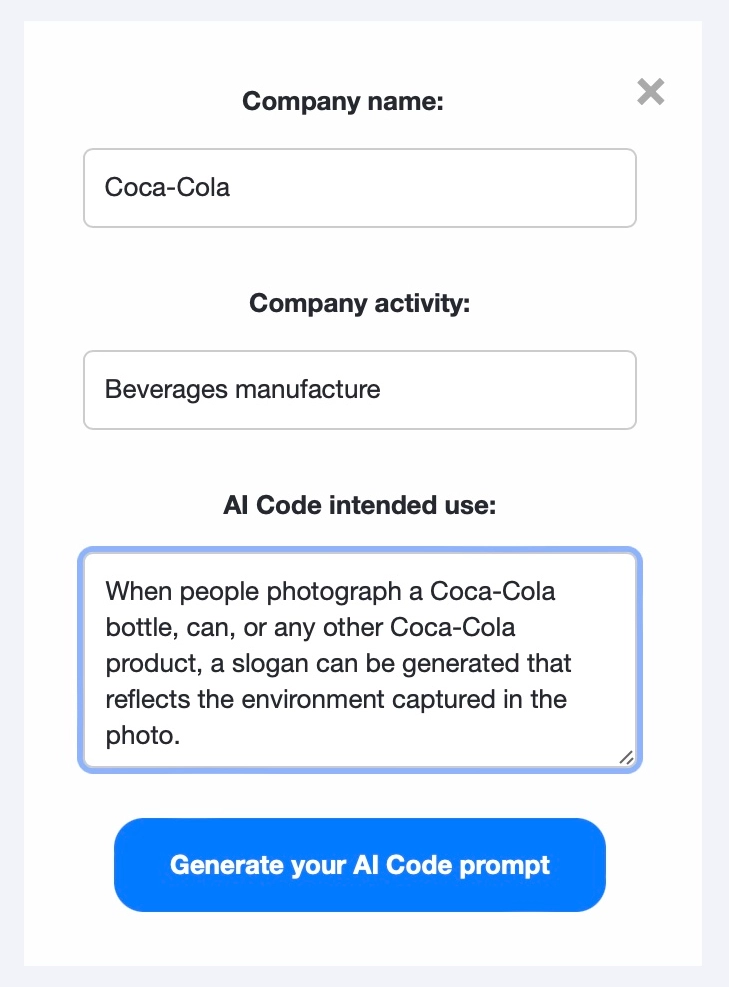
AI Code: เพิ่มความสมจริงด้วยผู้ช่วย AI และลองใช้งานเสมือนจริงด้วย AI ผ่าน AR QR Code
เทคโนโลยีAR Code | 19/12/2025
ในยุคดิจิทัลปัจจุบัน ธุรกิจต่างๆ ต้องการโซลูชันสุดล้ำเพื่อดึงดูดความสนใจ กระตุ้นการมีส่วนร่วม และนำหน้าคู่แข่ง AR Code ช่วยเสริมประสิทธิภาพให้ธุรกิจด้วยการผสานเทคโนโลยีความเป็นจริงเสริม (AR) และปัญญาประดิษฐ์ (AI) สุดล้ำสมัย จนเกิดเป็น AI Code อันทรงพลัง เทคโนโลยี AI Assistant QR Code นี้ได้กำหนดนิยามใหม่ให้แก่การปฏิสัมพันธ์ของผู้ใช้และองค์กร สร้างระบบอัตโนมัติอัจฉริยะและเพิ่มการมีส่วนร่วมกับแบรนด์ในทุกภาคส่วน

แสดงข้อมูลข้อความระยะไกลบน AR QR Code ด้วยฟีเจอร์ AR Data และ API ของมัน
เทคโนโลยีAR Code | 24/12/2025
เทคโนโลยีความเป็นจริงเสริม (Augmented reality) กำลังปฏิวัติรูปแบบการดำเนินธุรกิจและยกระดับการมีส่วนร่วมดิจิทัลในระดับโลก ฟีเจอร์ AR AR Code Data ช่วยให้ธุรกิจของคุณแสดงข้อมูลแบบเรียลไทม์ผ่าน AR QR Codes ให้กับผู้ชมในทุกที่ ทุกเวลา แพลตฟอร์ม AR SaaS ที่แข็งแกร่งนี้สตรีมข้อมูลสดในสภาพแวดล้อม AR ที่สมจริง ช่วยให้ธุรกิจสร้างประสบการณ์ลูกค้าที่มีอิทธิพลและปรับปรุงการดำเนินงานขององค์กรให้คล่องตัวขึ้น เพิ่มความได้เปรียบทางการแข่งขันด้วยการเชื่อมต่อ AR Code API อันทรงพลังเพื่อช่วยอัตโนมัติกระบวนการ ให้บริการเนื้อหาแบบไดนามิก และขยายการมองเห็นแบรนด์ของคุณ
เทคโนโลยี AR Code ช่วยให้ธุรกิจสามารถผสานทรัพย์สินดิจิทัล เช่น โมเดล 3D ข้อความ รูปภาพ และวิดีโอเข้าสู่สภาพแวดล้อมจริงได้อย่างไร้รอยต่อ โดยใช้สมาร์ทโฟน แท็บเล็ต และแว่น AR ในฐานะโซลูชั่น SaaS ด้านความเป็นจริงเสริมชั้นนำ AR Code เชื่อมต่อโลกจริงและโลกดิจิทัลเพื่อยกระดับการมีส่วนร่วมกับลูกค้าและปฏิสัมพันธ์กับแบรนด์ ค้นพบ วิธีสแกน AR Codes เพื่อเข้าถึงความเป็นจริงเสริมทันที
AR Code ผสานสื่อดิจิทัลกับสถานที่จริงเพื่อความประทับใจ AR ที่เสมือนจริง เพิ่มการมีส่วนร่วมของผู้ใช้และความภักดีต่อแบรนด์ สัมผัสเทคโนโลยี AR สำหรับ โค้ชชิ่งกีฬาสมจริง และสำรวจประโยชน์ของ ความจริงเสริมในการศึกษา ดูคู่มือ AR Code SaaS เพื่อเลือกโซลูชั่นที่เหมาะสมกับธุรกิจของคุณ
การประยุกต์ใช้ AR QR Code สำหรับธุรกิจ
AR QR Code กำลังเปลี่ยนแปลงอุตสาหกรรมหลากหลายด้วยประสบการณ์ความจริงเสริมที่สร้างสรรค์ AR Code SaaS ปรับโฉมการตลาดและการดำเนินงานแบบดั้งเดิมด้วยการผสานสื่อดิจิทัลแบบโต้ตอบ ค้นพบ AR Code สำหรับการโฆษณาแบบอินเตอร์แอคทีฟ และเรียนรู้ว่าแบรนด์ต่างๆ เพิ่มการมีส่วนร่วมและ ROI อย่างไร
อุตสาหกรรมหลักที่ใช้ AR QR Code เพื่อการเติบโตทางธุรกิจ:
- บรรจุภัณฑ์สินค้า: เพิ่มการมีส่วนร่วมของผู้บริโภคและสร้างความแตกต่างให้สินค้า ด้วยโชว์เคส 3D, วิดีโอเดโมแบบโต้ตอบ และเนื้อหาเป็นขั้นตอน ดูวิธีที่ AR QR Code พลิกโฉมการตลาดบรรจุภัณฑ์เครื่องดื่ม
- การตลาดงานอีเวนต์: ยกระดับแบนเนอร์ โปสเตอร์ และบูธ ด้วยประสบการณ์ AR เพื่อการมีส่วนร่วมของผู้เข้าร่วมงานมากขึ้น ดู AR QR Code ที่เพิ่มประสิทธิภาพสื่อประชาสัมพันธ์งานอีเวนต์
- สื่อสิ่งพิมพ์: เปลี่ยนโบรชัวร์ ใบปลิว และนามบัตรให้โต้ตอบได้ด้วยพอร์ทัลสู่เรื่องราวดิจิทัล ดู AR QR Code สำหรับนามบัตร และการเชื่อมโยงเครือข่ายรูปแบบใหม่
- ค้าปลีกและแฟชั่น: ให้ลูกค้าลองสินค้าสมจริง (Virtual Try-on) และนำเสนอภาพดิจิทัลแบบไดนามิคในสินค้าหรือหน้าร้านเพื่อเพิ่มยอดขาย
- การศึกษาและการฝึกอบรม: มอบโมดูล AR แบบอินเตอร์แอคทีฟเพื่อการเรียนรู้ของพนักงานและนักเรียน เยี่ยมชม AR Codes in Education เพื่อศึกษาวิธีแก้ปัญหา AR ด้านการศึกษา
- สิ่งพิมพ์และคู่มือ: คืนชีวิตให้หนังสือ นิตยสาร และคู่มือต่างๆ ด้วยภาพ 3D และลูกเล่นอินเตอร์แอคทีฟ ดู AR QR Code ที่เปลี่ยนแปลงสิ่งพิมพ์
- อีคอมเมิร์ซและเว็บไซต์: นำเสนอพรีวิว 3D, แสดงสินค้าใน AR ที่ช้อปได้ และระบบช่วยเหลือสินค้าทันที ใช้ AR Code ยกระดับประสบการณ์ช้อปปิ้งออนไลน์ เพื่อเพิ่มยอดแปลง
ปฏิวัติเมนูร้านอาหารด้วย AR Code เปลี่ยนเมนูกระดาษให้เป็นประสบการณ์ 3D สุดน่าตื่นเต้น สำรวจเทคนิค 3D scanning สำหรับเมนูดิจิทัลร้านอาหาร เรียนรู้เกี่ยวกับ AR Code Object Capture สำหรับสร้างโมเดล 3D บนอุปกรณ์มือถือ
การแสดงผล AR ที่หลากหลายสำหรับธุรกิจ
AR Code มอบประสบการณ์แสดงผล AR อัดแน่นด้วยฟีเจอร์ ไม่ว่าจะเป็น 3D Model อินเตอร์แอคทีฟ, การสแกนแบบ Photorealistic, คอนเทนต์แอนิเมชั่น และการเพิ่มประสิทธิภาพด้วย AI กระตุ้นการมีส่วนร่วมด้วย AI Codes สำหรับการแสดงสินค้า และมอบประสบการณ์ AR ส่วนบุคคลด้วยเนื้อหาตามเป้าหมาย
เครื่องมือระดับมืออาชีพสำหรับสร้าง AR อย่างสมบูรณ์
แพลตฟอร์ม AR Code มอบเครื่องมือทรงพลังให้ธุรกิจ นักการตลาด และนักการศึกษาเพื่อสร้างและจัดการโปรเจ็กต์ AR:
- AR Code Object Capture – สแกนวัตถุจริงและสร้างโมเดล 3D อย่างละเอียดได้ง่ายๆ ดูคู่มือการสแกน 3D สำหรับเทคนิคที่ดีที่สุด
- AR Text – สร้างและวางข้อความ 3D แบบกำหนดเองในฉาก AR ได้ทันที ใช้ แอปมือถือ Text3D สำหรับสร้างข้อความ AR อย่างง่าย
- AR Frame – แสดงภาพ 3D สมจริงใน AR เพื่อประสบการณ์ที่น่าประทับใจ
- AR Portal – สร้าง walkthrough 360 องศาแบบ Immersive ได้สะดวก ดู วิดีโอสอนใช้งาน AR Portal เพื่อเริ่มต้น
- AR Logo – แปลงไฟล์ SVG ให้เป็นโลโก้ 3D อินเตอร์แอคทีฟ เรียนรู้วิธีออกแบบโลโก้ 3D สำหรับ AR อย่างรวดเร็ว
- AR Data API – ซิงค์ข้อมูลสดระยะไกลกับประสบการณ์ AR เพื่อเนื้อหาแบบเรียลไทม์ ดูบทเรียน AR Code Data API
- AR Face Filters – สร้างฟิลเตอร์บนใบหน้าแบบแบรนด์สำหรับแคมเปญ AR ที่ประทับใจ ทดลองฟิลเตอร์ใบหน้า AR QR code เพื่อจุดประกายการมีส่วนร่วมกับแบรนด์
- AI Codes – ใช้ AI เพื่อสร้างประสบการณ์ AR ที่ตอบสนองและชาญฉลาดสำหรับผู้ใช้แต่ละราย
- AR Videos – ผนวกวิดีโอกระตุ้นการมีส่วนร่วมเข้ากับ AR QR Code เพื่อการปฏิสัมพันธ์มัลติมีเดียแบบไดนามิค สำรวจฟีเจอร์ AR Video เพื่อยกระดับโปรเจ็กต์ของคุณ
เพิ่มการมีส่วนร่วมสูงสุดด้วยเครื่องมือการตลาด AR Code
กระตุ้นการมีส่วนร่วมของลูกค้าด้วย Custom Links และ Custom Pages for AR นำผู้ใช้ไปสู่การแปลงผลด้วยข้อความ Call-to-Action ตามเป้าหมายและเนื้อหาไดนามิคเฉพาะกลุ่ม
AR Code analytics ชุดเครื่องมือติดตามประสิทธิภาพแคมเปญ รูปแบบผู้ใช้ และการเข้าถึงด้วยข้อมูลเรียลไทม์ จัดการโปรเจ็กต์ AR จำนวนมากด้วยคลาวด์โฮสติ้งและเครื่องมือทีมเวิร์ค เรียนรู้ วิธีติดตามและ re-target ผู้ใช้งานจาก AR QR Code เพื่อเพิ่ม ROI การตลาด
AR Code: รองรับอุปกรณ์อย่างกว้างขวาง
AR Code รองรับ Meta Quest 3, Apple Vision Pro และอุปกรณ์ iOS/Android กว่าสองพันล้านเครื่องอย่างไร้รอยต่อ ความเข้ากันได้ที่ครอบคลุมนี้ทำให้เครื่องมือการตลาด AR, การศึกษา และแคมเปญของคุณเข้าถึงกลุ่มผู้ใช้ได้กว้างที่สุด อ่านว่า AR Code ยกระดับประสบการณ์ Meta Quest 3 AR และทำงานร่วมกับ Apple Vision Pro และ visionOS ได้อย่างไร
ปลดล็อกการตลาดความเป็นจริงเสริมที่เติบโตได้และการมีส่วนร่วมดิจิทัลด้วย AR Code SaaS เริ่มทดลองใช้ AR Code SaaS ฟรี เพื่อเพิ่มปฏิสัมพันธ์ ผลลัพธ์ที่วัดได้ และรักษาความเป็นผู้นำด้านนวัตกรรม AR ของแบรนด์คุณ
148,584 AR experiences
551,030 สแกนต่อวัน
128,760 ผู้สร้าง



